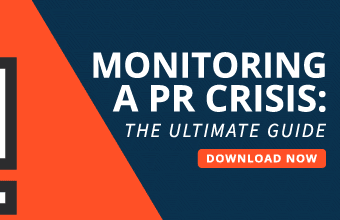Fashion’s elite brands, which have a sense of mystery, specialization, authenticity and perfect quality, represent refinement in the world market. However, even the best luxury brands know that no business is without its disasters, which can harm the company’s reputation. This article focuses on the necessity of effective crisis management and communication plans that can serve as a buffer and preserve the company image and its customers’ confidence during the stormy period.
Exploring the Crisis Communication Environment
Networking computing, brands ranging from the apparel industry to automobiles are trademarks of luxury and can demand a strict image reinvention process. A number of contingencies including, but not limited to, product recalls, disruptions in the supply chain, and other negative company image incidents may arise. Crisis communication strategies are therefore important for any organization as they are more than a back-up plan; they form the core of brand protection. There are several situations that every luxury business must think through ahead of time, so a universal disaster communication plan is necessary.
Active Public Relations Strategies
It should be noted that the prevention strategies are rather useful for the first level of crisis management. Such an approach to maintaining active communication with stakeholders can contribute to the growth of luxury brands’ operational tenacity. This is all about avoiding equivocation—all communications within the business must be clear and the company must remain active in its customer, employee, supply, and media relations. These are the relationships that are nurtured during normal times of operation to build trust, which is crucial in a crisis period.
The utilization of social media and digital platforms often provides significant boosts to any crisis communication campaign. Environmental management means paying attention to feedback from the concerned parties and providing accurate information consistently to create an appropriate response to avoid negative perceptions that may damage consumer confidence.
Example: Swiss Watch Brands
In a crisis, for example, Swiss watch brands can maintain trust by providing truthful and pertinent information to their clients. This can sustain consumer confidence while preserving the brand’s reputation as one of the pioneers of luxury watch production.
Brand identity protection is another significant challenge that affects brand equity and hampers brand managers from making necessary changes when needed, even if they are effective ways of improving the brand.
This is one of the most important issues that needs to be understood in crisis communication: Luxury brands must hold onto the brand elements, brand personality, and brand promise established during calmer times. When real-life experiences are integrated with the brand messaging, the possibility of building up a ‘voice’ and ‘credibility’ becomes a reality in the eyes of the public and even competitors.
In crises, there should be uniformity in the communication strategy on social media platforms. If luxury brands speak in unison and accept the blame for any failure, it will reinforce the fact that product quality and shopper’s needs are their top priorities.
Intended Actions in Crisis Management
- Embrace Continuous Preparedness: Crisis communication plans must be created and strengthened in advance with arising issues in mind. Counsel spokespersons and come up with the communication statements that will be used.
- Transparency and Accountability: Honesty is always a brand’s best policy. Apologize, own up, and explain to everyone the measures being taken to resolve the problem.
- Utilize Digital Platforms Effectively: Ensure stakeholders are informed and are up to date on developments through social media, websites, and emails if there is appropriate means to quickly clear the confusion. Monitor the web regularly to check on what people are saying about your product and provide relevant feedback. Additionally, utilizing tools that aid in business operations, like free small business invoice templates, can help maintain transparency and organization during a crisis, ensuring that all financial transactions and communications are well-documented and easily accessible.
- Deliver Consistent Messaging: Create messages that are consistent across the various channels of communication. This helps to eliminate misunderstandings and also to affirm the dedication of the brand to manage the crisis.
- Leverage Strong Relationships: Engage current allies in the media, identified opinion leaders, and loyal customers to generate positive information that will lessen negative perceptions.
- Highlight Brand Values: Remind the audience about the key values of the brand, the history of its creation, and the desire to provide the best product throughout the world. Communicating to the public about the consistency of the brand over time can be useful during a crisis.
Conclusion
Crisis communication plans have become mandatory for luxury brands to maintain their reputations and the trust of clients during unpredicted hurdles. Consumer trust, brand reputation, and taking responsibility, as well as the use of preventive public relations, can help these brands overcome crises.




